Github Packages和Github Actions实践之CI/CD

概述
Github在被微软收购后,不忘初心,且更大力度的造福开发者们,推出了免费私有仓库等大更新。近期又开放了packages和actions两个大招,经笔者试用后感觉这两个功能配合起来简直无敌。
GitHub Packages 是一个和每一个代码仓库关联的软件包仓库。通俗来说就是代码仓库中存放的是源码,软件包仓库中存放的是编译输出后的可以被各个语言生态的依赖管理工具直接依赖的lib。类似的我们熟知的有maven中央仓库和nmp仓库。
GitHub Actions 是一个Github原生的持续集成和部署的工作流组件。通俗来说就是Github免费给你提供虚拟主机,由你编写工作流脚本来进行源码的检出,编译,测试,和发布。类似的我们可以想象成Github给每个仓库都免费绑定了一个Jenkins服务,编写pipeline脚本即可进行源码的集成和发布。
Github Token
首先我们讨论下Github Token,因为后续操作都需要用到这个Token.
Github Token是用户登录后生成的用户凭证,类似JWT登录令牌,令牌关联了操作权限,用户开发者授权给第三方服务进行仓库管理或者开发者自己利用Github Api做一些极客操作。
操作入口:https://github.com/settings/tokens。
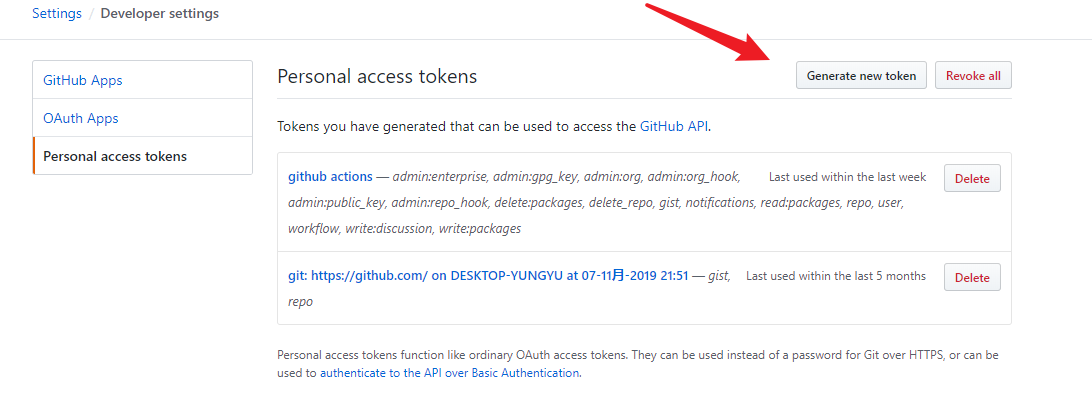
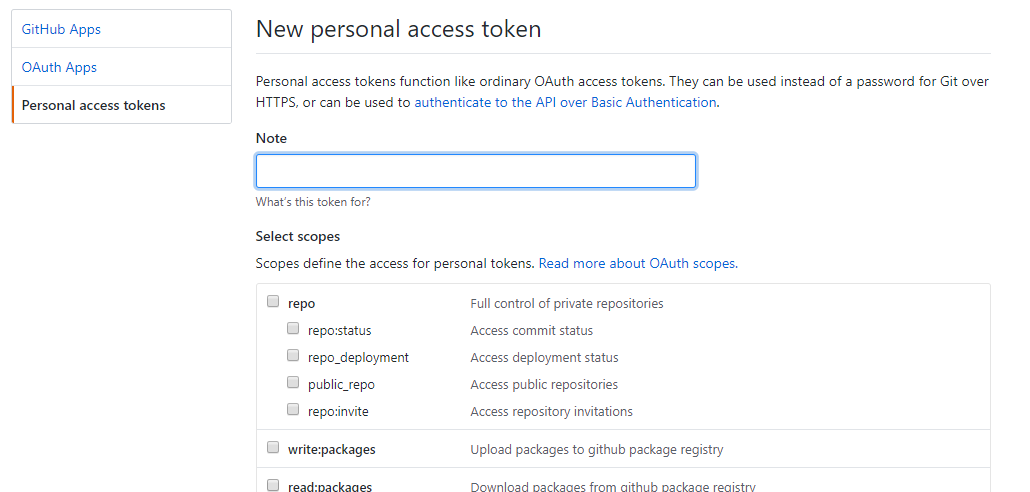
点击生成Token后输入描述性名称,一般用来说明这个token是用来干嘛的,勾选这个token的权限。确认后会生成一个token字符串。这个token只会展示一次,退出页面后就会消失,所以要谨慎保存。
如果token不慎泄露,可以在token列表对token进行失效操作。
Github Secrets 密文字典
密文字典用于将一些隐私的保密的配置如password,token等通过键值对的形式以密文保存在Github中,在一些需要的场景如Github Actions中,可以通过Github暴露的Api进行取用,避免了源码公开导致的安全问题。
密文字典与各个代码仓库关联,只能在当前代码仓库的上下文中使用,当前没有全局的密文字典。
入口路径为:仓库 > Settings > Secrets
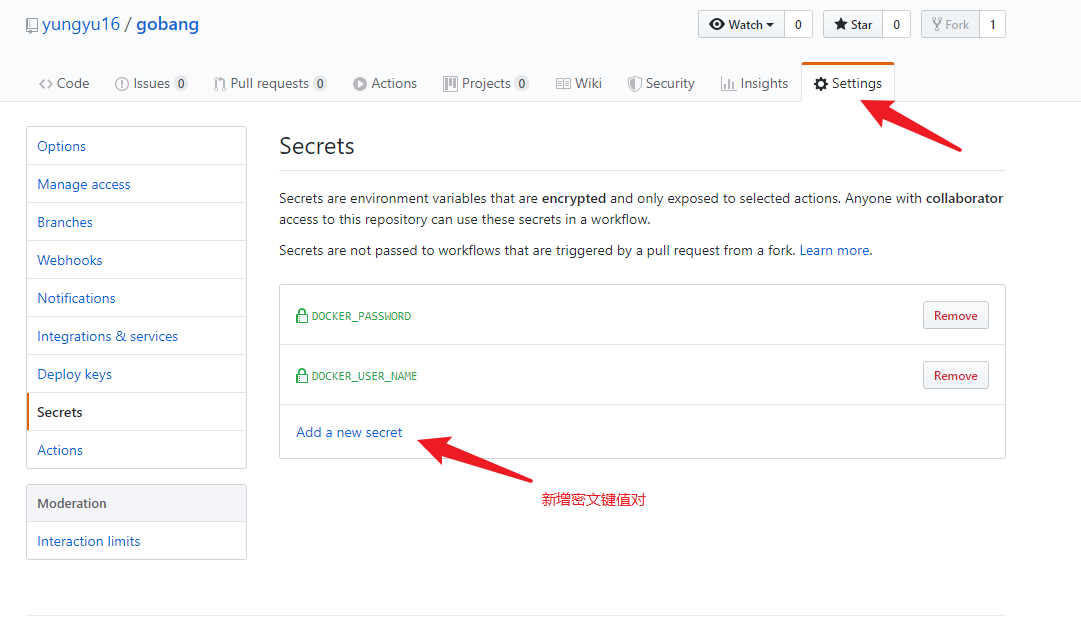
Github Packages 包仓库
入口:
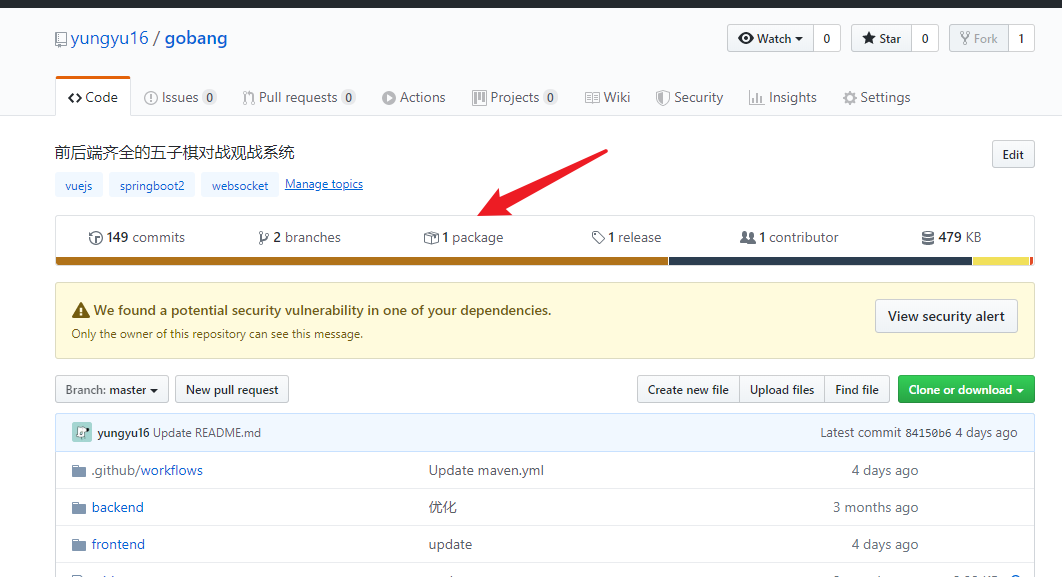
支持的包类型:
| 包客户端 | 语言 | 包格式 | 描述 | 仓库地址 |
|---|---|---|---|---|
npm |
JavaScript | package.json |
Node package manager | https://npm.pkg.github.com |
gem |
Ruby | Gemfile |
RubyGems package manager | https://USERNAME:TOKEN@rubygems.pkg.github.com/OWNER/ |
mvn |
Java | pom.xml |
Apache Maven project management and comprehension tool | https://maven.pkg.github.com/OWNER/REPOSITORY |
gradle |
Java | build.gradle 或 build.gradle.kts |
Gradle build automation tool for Java | https://maven.pkg.github.com/OWNER/REPOSITORY |
docker |
N/A | Dockerfile |
Docker container management platform | |
dotnet CLI |
.NET | nupkg |
NuGet package management for .NET |
各类型账户的限制(自用完全够用了):
| 产品 | 存储 | 每月流量 |
|---|---|---|
| GitHub Free | 500MB | 1GB |
| GitHub Pro | 1GB | 5GB |
| GitHub Team | 2GB | 10GB |
| GitHub Enterprise Cloud | 50GB | 100GB |
当前Packages支持常见的Docker,Java,Nodejs等生态。默认每个Github仓库都会关联一个包仓库。每个包仓库为一个包命名空间,因为每个包仓库地址都关联了代码仓库的id拥有者的id和。如一个Docker镜像名为Test:latest可以发布到多个Github包仓库且不会互相覆盖(Npm包的命名规则将代码仓库id和用户id放在了包名上,没有放在包仓库地址上)。
虽然公开代码仓库的包仓库界面是公开可读的,但是包的发布和下载需要认证。需要使用Github Token。下载需要认证目前被吐槽的比较狠,社区已经在讨论这个issue,后续可能会允许免密下载。
下面以Docker为例讲解用法。
1、首先我们要进行登陆:
$ docker login -u USERNAME -p TOKEN docker.pkg.github.com
2、登录后我们将指定镜像重命名为Github Packages规定的Docker镜像名:
$ docker tag IMAGE_ID docker.pkg.github.com/OWNER/REPOSITORY/IMAGE_NAME:VERSION
注意:镜像名格式为docker仓库域名+仓库拥有者id+仓库名+镜像名+版本号
3、发布镜像
$ docker push docker.pkg.github.com/OWNER/REPOSITORY/IMAGE_NAME:VERSION
回到仓库页面,进入Packages,可以看到发布的包:

点击包名进入详情:

Github Actions 持续集成工作流
1、Github免费提供了虚拟主机,用来提供持续集成的运行环境。处于安全性考虑也可以使用自己的服务器资源执行构建任务,详见:Hosting your own runners
主机规格:
- 2-core CPU
- 7 GB of RAM memory
- 14 GB of SSD disk space
当前可选的运行环境有:
| Environment | YAML Label | Included Software |
|---|---|---|
| Ubuntu 18.04 | ubuntu-latest or ubuntu-18.04 |
ubuntu-18.04 |
| Ubuntu 16.04 | ubuntu-16.04 |
ubuntu-16.04 |
| macOS 10.15 | macos-latest or macos-10.15 |
macOS-10.15 |
| Windows Server 2019 | windows-latest or windows-2019 |
windows-2019 |
| Windows Server 2016 | windows-2016 |
windows-2016 |
各个运行环境中预装了常用的工具和各个语言生态的工具链,Ubuntu环境预装的软件列表:列表
以Java生态为例,Git,Docker,JDK,Maven已经预装:

2、使用方式:
Actions使用YAML文件来编写声明式工作流。
在代码仓库根目录新建 github/workflows目录,目录内的所有.yml文件都会被识别为一个持续集成工作流。

脚本语法详见阮一峰的博客,简介如下:
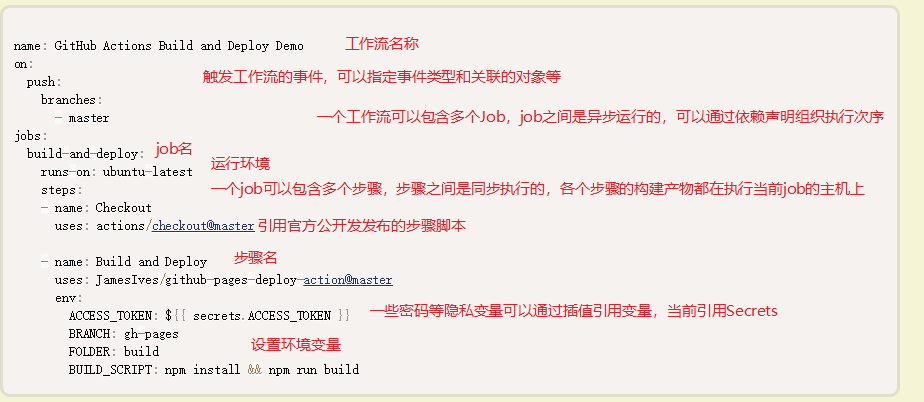
工作流使用声明式语法,指定要干嘛,不需要说明怎么干,使用这种策略脚本清晰可读,但是表达能力较弱。
指定目录下每个yml文件会被自动识别为一个工作流,每个工作流由有自己的名称,和触发工作流的事件。事件主要分为:
- git操作相关的事件如push,pull request等。
- cron表达式
一个工作流包含多个job,需要指定运行环境。job之间是异步执行的,可以通过needs显式指定依赖来干预job执行次序,由于job在不同主机上执行,分属不同的文件系统,各个job产生的构建中间产物无法共用,一般通过将构建产物发布到artifacts来进行衔接。
一个job可以包含多个step,同一个job中的setp是同步执行的,各个步骤的构建产物都在当前job使用的主机上。
由于步骤重合度高,如maven编译,docker构建,docker发布等,Github使用应用市场来汇总开发者开源的构建步骤脚本,用于重用。Github自己也开发了一些基础功能脚本如 actions/checkout。
可以通过在步骤中使用uses命令+actions名称@版本来引用功能,节约成本和可读性。
Token,密码等隐私变量可以通过暴露的Secrets对象利用插值语法来引用。
3、为了丰富工作流脚本的表达能力,Github在脚本编译执行上下文中暴露了一些Github变量和环境变量,用于开发者使用。
Github变量如下:
| Context name | Type | Description |
|---|---|---|
github |
object |
Information about the workflow run. For more information, see github context. |
env |
object |
Contains environment variables set in a workflow, job, or step. For more information, see env context . |
job |
object |
Information about the currently executing job. For more information, see job context. |
steps |
object |
Information about the steps that have been run in this job. For more information, see steps context. |
runner |
object |
Information about the runner that is running the current job. For more information, see runner context. |
secrets |
object |
Enables access to secrets set in a repository. For more information about secrets, see "Creating and using encrypted secrets." |
strategy |
object |
Enables access to the configured strategy parameters and information about the current job. Strategy parameters include fail-fast, job-index, job-total, and max-parallel. |
matrix |
object |
Enables access to the matrix parameters you configured for the current job. For example, if you configure a matrix build with the os and node versions, the matrix context object includes the os and node versions of the current job. |
环境变量如下:
| Environment variable | Description |
|---|---|
HOME |
The path to the GitHub home directory used to store user data. For example, /github/home. |
GITHUB_WORKFLOW |
The name of the workflow. |
GITHUB_RUN_ID |
A unique number for each run within a repository. This number does not change if you re-run the workflow run. |
GITHUB_RUN_NUMBER |
A unique number for each run of a particular workflow in a repository. This number begins at 1 for the workflow's first run, and increments with each new run. This number does not change if you re-run the workflow run. |
GITHUB_ACTION |
The unique identifier (id) of the action. |
GITHUB_ACTIONS |
Always set to true when GitHub Actions is running the workflow. You can use this variable to differentiate when tests are being run locally or by GitHub Actions. |
GITHUB_ACTOR |
The name of the person or app that initiated the workflow. For example, octocat. |
GITHUB_REPOSITORY |
The owner and repository name. For example, octocat/Hello-World. |
GITHUB_EVENT_NAME |
The name of the webhook event that triggered the workflow. |
GITHUB_EVENT_PATH |
The path of the file with the complete webhook event payload. For example, /github/workflow/event.json. |
GITHUB_WORKSPACE |
The GitHub workspace directory path. The workspace directory contains a subdirectory with a copy of your repository if your workflow uses the actions/checkout action. If you don't use the actions/checkout action, the directory will be empty. For example, /home/runner/work/my-repo-name/my-repo-name. |
GITHUB_SHA |
The commit SHA that triggered the workflow. For example, ffac537e6cbbf934b08745a378932722df287a53. |
GITHUB_REF |
The branch or tag ref that triggered the workflow. For example, refs/heads/feature-branch-1. If neither a branch or tag is available for the event type, the variable will not exist. |
GITHUB_HEAD_REF |
Only set for forked repositories. The branch of the head repository. |
GITHUB_BASE_REF |
Only set for forked repositories. The branch of the base repository. |
总结
自从Github抱上了巨硬这条大腿以后,疯狂向开发者抛出大利好。毕竟背后有巨硬财大气粗,而且巨硬靠着企业业务赚钱也不指着向开发者个人收费。
结合Github Actions和Github Packages,可以完成一整个CI闭环,比如代码Push到Github上的某个分支,触发Action,构建Docker镜像push到Packages,调用Webhook触发阿里云服务器pull image部署。对于个人写一些小的开源项目完美够用,节约了在阿里云服务器搭建Jenkins等CI服务的资源。真香~~~
考虑到Github Actions提供的虚拟主机性能不错(比我买的阿里云主机好多了...)有公网IP可以访问外网,其实还可以玩点别的花活,比如抢火车票?爬网页?刷评论?发动你的脑瓜壳吧~


 浙公网安备 33010602011771号
浙公网安备 33010602011771号